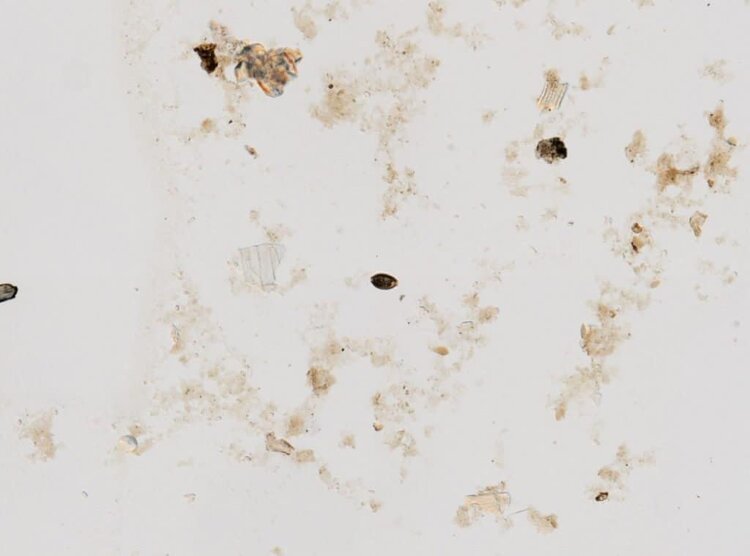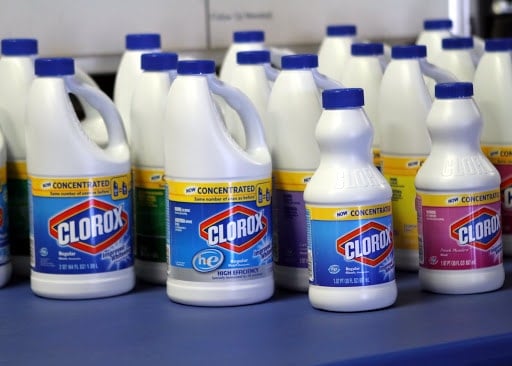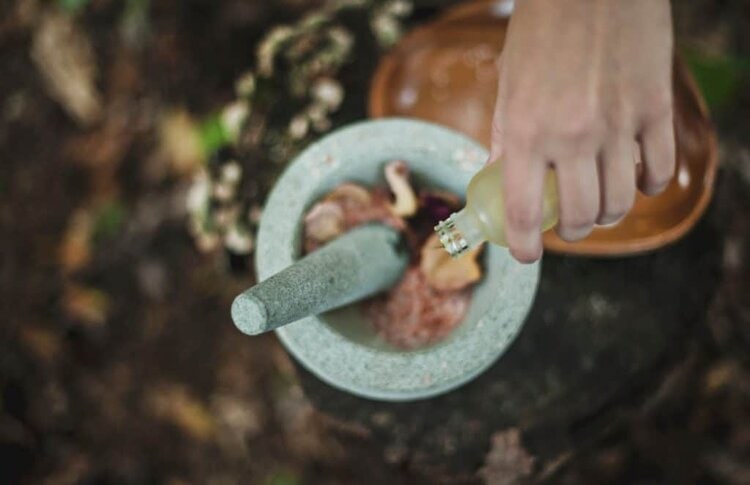You can easily get bed bug stains out of the wall by spraying water on them and gently scrubbing the affected area with a cloth. If the stains persist, use hydrogen peroxide. First, test on a hidden part of your wall to make sure it won’t cause discoloration.
Most bugs that leave brown stains on walls suck the blood of warm-blooded animals throughout the night. After their nocturnal meal, they digest the blood and eliminate it, leaving stains behind.

The stains can have a brown, black, or red color. And you can see them not only on walls but on mattresses, baseboards, and other home surfaces.
Even if you successfully eliminate the bugs and end the infestation, you still have to deal with the unsightly stains. In this article, we’ll share 8 tips for cleaning brown stains on your walls, so let’s dive right in.
Bugs That Leave Brown Stains on Walls: 8 Tips to Clean
Bed bugs often prefer wood and textile over plastic and metal as they can hide in the cracks and crevices. So, have that in mind when spraying treatments for bed bugs.
The following tips will make your cleaning process a breeze.
Tip 1: Get the Right Tools and Equipment
The tools and equipment you use in the cleaning process will determine if things go as planned or not. So, make sure you get the right ones.
The things you will need for this cleaning process include 1/2 cup of white vinegar, 5 cups of ammonia, 1/4 cup of baking soda, a bucket, a cleaning sponge, a towel, and of course, a little patience and elbow grease.
Tip 2: Prepare the Cleaning Solution
Fill a large bucket with clean, lukewarm water and add all the ingredients.
Stir well until they all dissolve and combine. You will obtain a universal cleaner with mild abrasive properties. The solution is strong enough to remove stains but not so strong as to cause damage.
Achieving the right balance between care and strength is crucial when handling all types of stains, including brown ones on walls left by bugs.
Tip 3: Get Scrubbing!
Soak your cleaning cloth in the solution, then squeeze all the solution out afterward before you scrub the bug residue from your walls.
You can use a brush if you have walls made of porous materials like brick or stone. If the stains persist, add a generous amount of baking soda onto a wet sponge and scrub until they’re completely gone.
Finish the cleaning process by rinsing off the solution with a damp cloth. Moreover, dry off the affected area with a clean towel. That way, you will prevent dripping and watermarks.
Tip 4: Use A Commercial Stain Remover
If the homemade solution doesn’t work or you have a wooden wall, you can obtain a commercial stain remover.

Keep in mind that most store-bought stain removers contain hydrogen peroxide that can successfully remove stains but also cause discoloration.
Therefore, test any product you buy on a hidden area of your wall to prevent damage.
Mix oxalic acid and water if you’re dealing with other types of stains, such as rust-colored ones. The combination does miracles for such stains.
Note that oxalic acid will also lighten wood, so you must use sandpaper to rub off the surface afterward to match it with the surrounding color.
Tip 5: Have You Heard of Cleaning Erasers?
In certain cases, using cleaning erasers can remove bug stains. They have a similar function to the homemade cleaning method above with the bucket.
You dip the cleaning eraser into the water and scrub the stain. It’s as simple as that, but keep in mind that sometimes these products won’t clean the whole stain.
And then, you will have to resort to other more effective cleaning items and methods such as the ones mentioned above to finish the job successfully.
Tip 6: Toss Damaged or Heavily Stained Wallpaper
If you’re dealing with old and heavily stained wallpaper, don’t waste time getting the stains out of it. Instead, toss the old wallpaper.
Once it’s removed, clean up any fecal residue with lukewarm soapy water and make sure the wall is completely clean before hanging new wallpapers.
If you notice bug stains on painted walls, remove everything before repainting. Otherwise, the blood might seep through the new paint.
Lastly, fix all cracks in the walls and baseboards to prevent bed bugs from entering your home in the future and causing yet another mess.
Tip 7: Make Sure the Bugs Never Come Back
The US Environmental Protection Agency approves more than 300 pesticide sprays for treating bed bugs.
And if you decide to use any of those products, follow the directions on the package.

Spot spray treatments work best if the cracks and crevices have been cleaned of dirt, eggs, fecal blood, and insect casings before spraying.
If you feel bad about killing bugs or simply can’t decide what product to use, hire a pest control professional.
Tip 8: And if They Come Back, Call Professionals
If you’re dealing with a severe infestation problem or you’ve tried everything, but the bugs keep coming back, it’s time to call professionals.
And once they get the job done, make sure you try the following prevention methods to keep bugs at bay and your walls clean in the future.
How to Keep Bugs at Bay: 3 Effective Methods
Households get attacked by different types of bugs that require different treatments, but the following methods will chase away all types of bugs, so take a look.
Method 1: Clean Your Home Thoroughly
Sounds easy, but it’s not, as you will have to vacuum everything in the home, including beds, rugs, carpets, sofas, etc.
Keep in mind that most bugs, especially dust mites, love soft furnishings. So, make sure you vacuum and clean everything.
Also, if there’s any mold on your furniture, use a mold remover to remove them from hard surfaces. Avoid using bleach on furniture for cleaning as it’s a corrosive solution that will cause great damage.
Also, don’t forget to clean your kitchen cabinets and pantry. Use tough food storage containers and jars.
Keep in mind that certain bugs like Indian meal moths, carpet beetles, and other pantry pests can chew through the surface of weak food storage containers.
That’s why there’s a high risk of pantry pest infestation for stored grains such as lentils, cereals, rice, and flour if they’re kept in weak containers.
Lastly, make sure you take out the trash before going to bed.
The trash in the kitchen, especially food waste, attracts flies that can lay eggs in your trash cans, which later turn into maggots.
Method 2: Use Bug Repellent Light Bulbs
Lights draw different bugs inside your home as they follow the light after the sunset and try to reach its source.
To prevent moths and other bugs from entering your home, install bug repellent light bulbs in your patio, garden, backyard, or front yard.
They’re also helpful if you have a swimming pool because lights in the outdoor area draw swimming pool bugs.
Therefore, install bug repelling light bulbs and bug zappers to stop them from getting into your pool and home. They’re very effective methods that don’t cost a lot but can save you a lot of trouble.
Method 3: Essential Oil Sprays

Use essential oil sprays or dehumidifiers to chase away bugs and prevent spots on your walls.
If you have a dehumidifier, add a few drops of peppermint essential oil, as bugs hate the strong smell of peppermint.
Not only will your home smell fresh, but the bugs will run out of the window in a hurry and never come back.
You can also spray your walls with essential oil sprays and everything else in your home to keep bugs away.
If you live in a hot and humid place, prefer a dehumidifier over essential oil sprays as it’s more effective. It will decrease the moisture levels in your indoor air and make your home less inviting for bugs.
FAQs on Bugs That Leave Brown Stains on Walls
Do bed bugs always leave stains?
As bed bugs suck human blood and the blood of warm-blooded animals, they leave stains behind because, after their meals, they digest the blood and then defecate on walls, beds, mattresses, pillowcases, carpets, etc.
Do stink bugs leave marks on walls?
Stink bugs leave marks not only on walls but also on lampshades, drapes, window sills, and other surfaces. And whether outside or inside, they’re difficult to chase away or keep at bay as they follow the lights after sunset.